What are the challenges that students of English as a second language (ESL) might face in academic reading and writing as they move from upper-secondary to tertiary education? In this blog post Laura Clyde explores some of these challenges, and considers how we can help our students prepare for this transition, using example activities from Cambridge Global English 11 and Cambridge Global English 12.
Laura Clyde has been involved in English language education for over 30 years, as a teacher, author and editor, and is a series editor on our Cambridge Global English series at stages 11 and 12. Cambridge Global English 10-12 is the ideal series for schools who want their students to follow a higher-level ESL programme from ages 14 to 18. The course equips learners with the skills and confidence in English for academic study at university.
Reading
At university level, the complexity of the reading material can be challenging for students. As well as finding the formal language and style of academic texts unfamiliar, they may also struggle to follow the overall theme, or argument, that the writer is putting forward.
Added to this, students may not be aware that they need to read critically – to question what the writer is saying and compare it with other viewpoints, not just to accept it at face value.
‘Many international students are not used to taking a critical approach when reading’, says Maria Teasdale, Senior Lecturer in English for Academic Purposes at the University of the West of England (UWE). ‘They don’t look beneath the surface, or for flaws in the argument – they just assume it will be right’.
To develop students’ ability to follow an argument, it can be helpful to give them practice in recognising features of a text that are used in the development of an argument, for example: pronouns that refer back to people and things that have been mentioned; linking words and phrases of contrast and addition; and repetition of vocabulary and use of synonyms. Here are some example activities from Global English 11.
History: Women in wartime in the USA
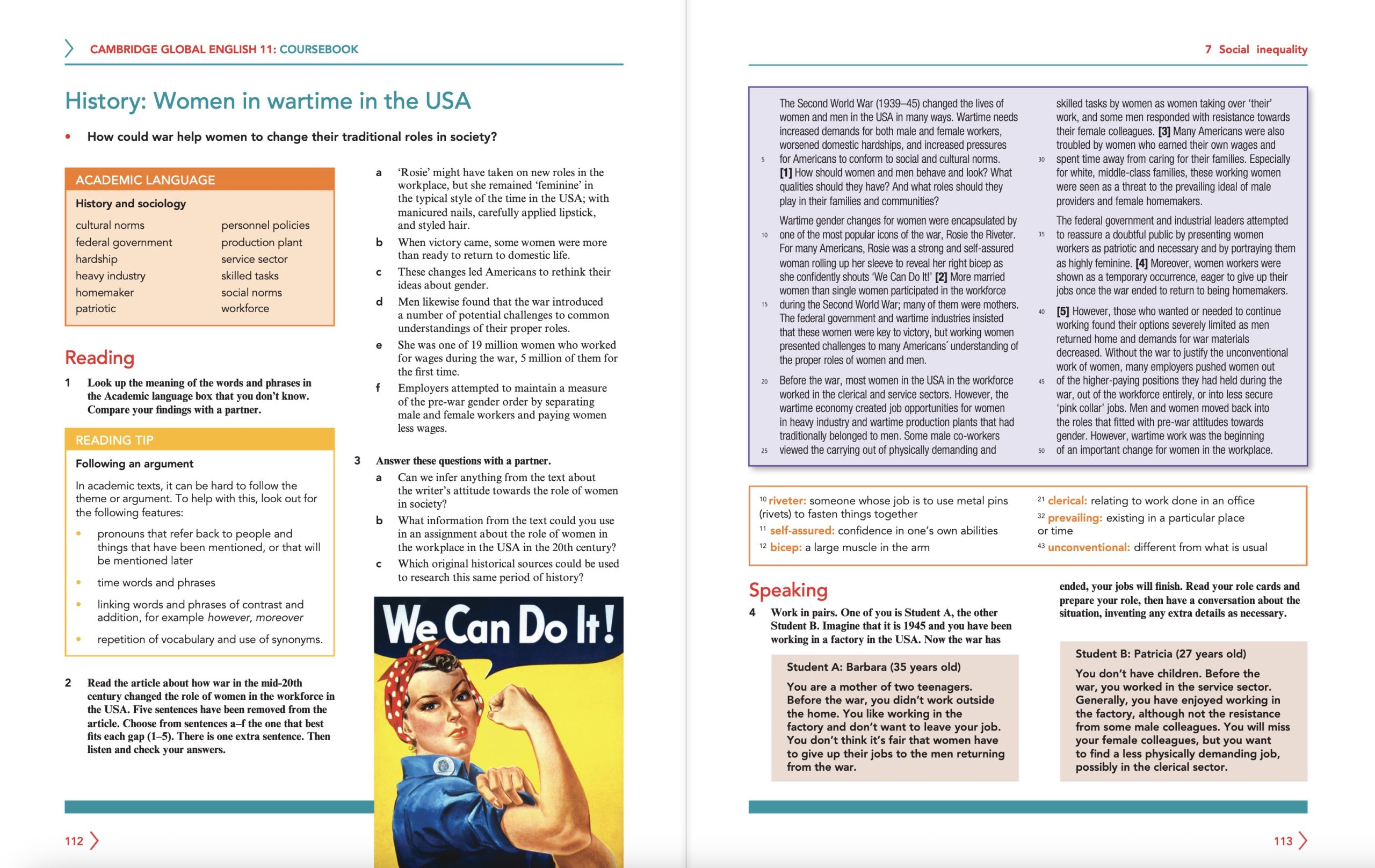
To encourage critical reading, ask students to think about the context within which a text was written – the time, place and culture – and how this may have influenced the viewpoints presented. What agenda might the author have had in writing the text? What might not be included in a text and why? And what’s the source of the text and can this source be trusted? Throughout Global English 11 and 12, students are encouraged to give a critical response to texts and to think about how they could explore the topic further. Here are some example activities from Global English 12.
Creative problem-solving
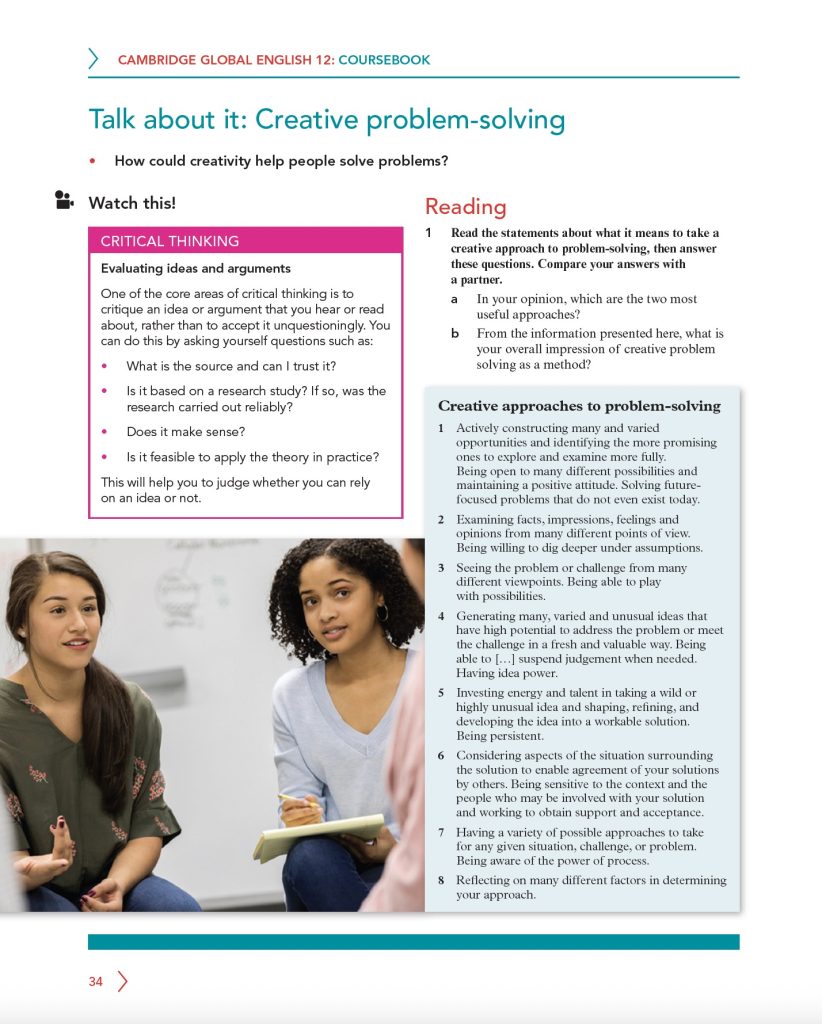
Art: Visual literacy as a life skill
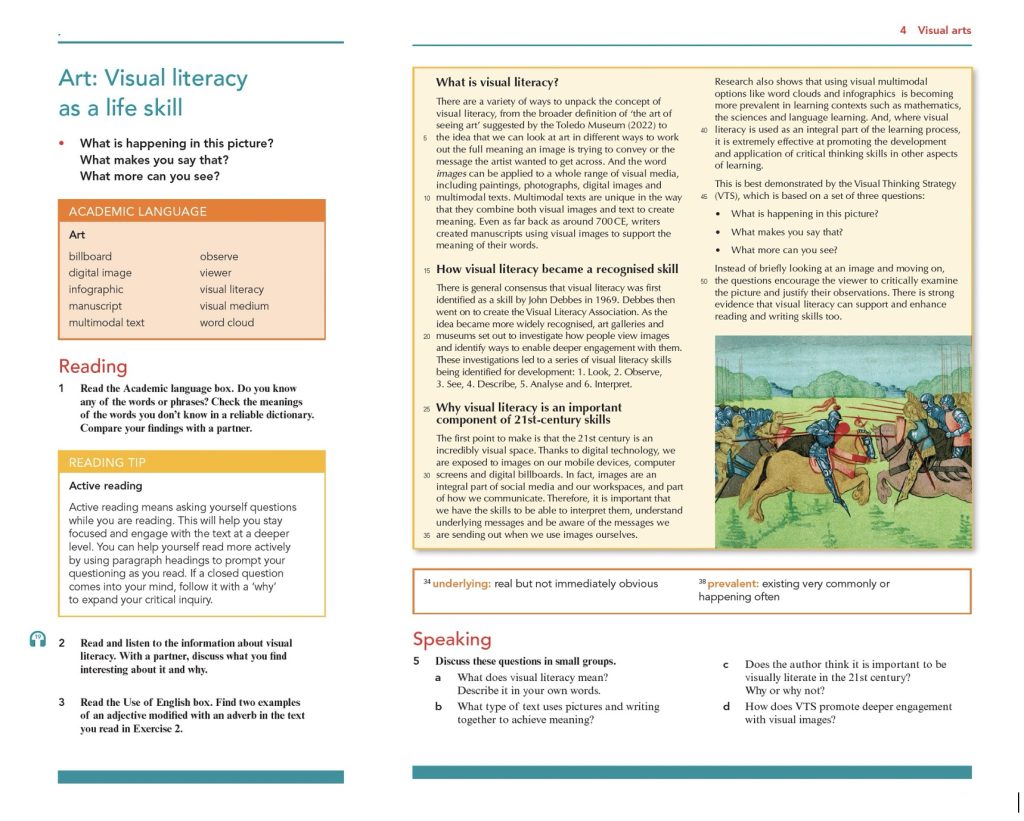
History and economics: An edible history

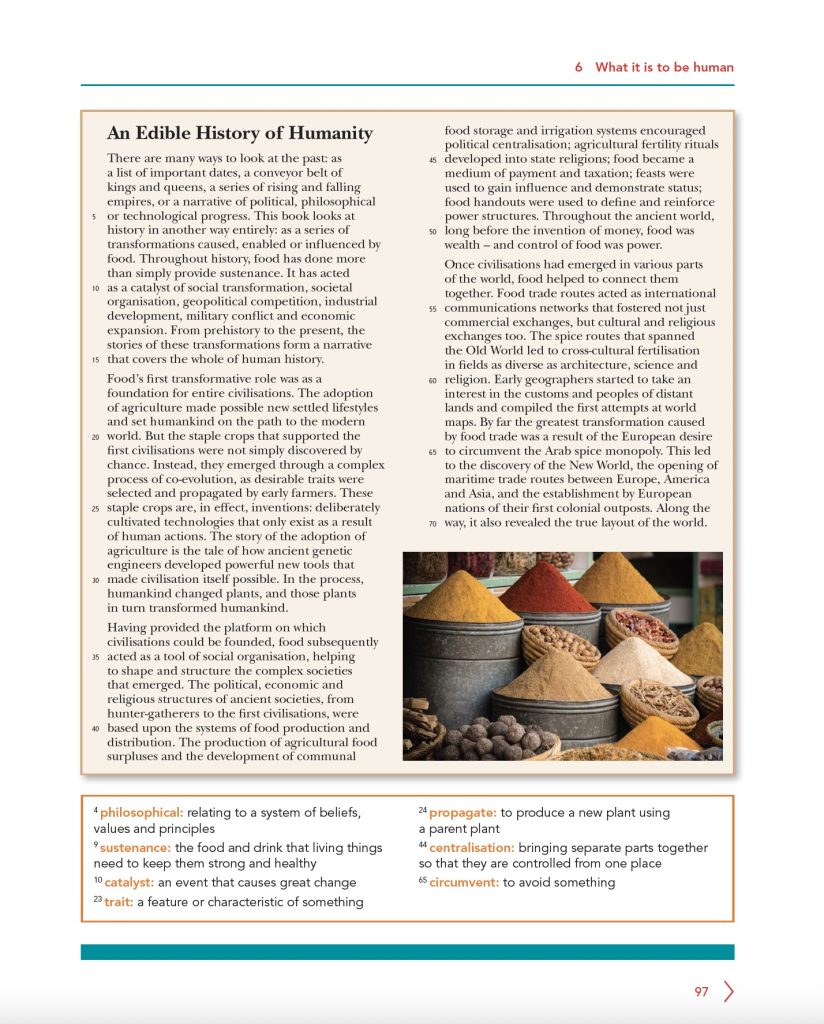
Writing
The main challenge for many students starting post-secondary education is mastering the type of academic writing that they are expected to produce – not only becoming familiar with what may possibly be new genres of texts, but also understanding that their writing needs to be analytical, persuasive and critical, going beyond the merely descriptive. In essay writing, for example, they will need to take a position on an issue and develop an argument in support of this position, backing it up with citations from the academic reading that they have done for the essay.
Maria from UWE would agree that it is gaps in writing skills that her international students tend to need the most help with. As well as issues with developing an argument, she says that students can also struggle with the nuts and bolts of writing a text. ‘Students often don’t know how to structure an essay, how to start it, how to develop paragraphs – basically, they don’t know how essays hang together. And in terms of language, they don’t know how to transition from one point to another or how to summarise and paraphrase the words and ideas of other writers.’
A first step in helping students develop their argumentation skills in essay writing is by giving them practice in taking a position on an issue and in thinking of ideas to support this position. In some essays, they will also need to discuss the opposing view, so it is useful to get them to think of ideas in support of that view, too.
To help students learn how to structure an essay, a good way to start is to get them to look at a model essay and analyse its structure. Elicit the purpose of each paragraph, before going on to look at the content in more detail. Get them to identify the writer’s position – what is she arguing for or against? What points are made in each paragraph? After looking at the content, focus on form in the model essay, eliciting words and phrases that students could use in their own essays.
Make writing an essay more manageable by focusing on one part of it at a time and getting students to write only that part, e.g. the introduction, or the main body.
Here are some example activities from Cambridge Global English 11.
Academic writing: A discussion essay
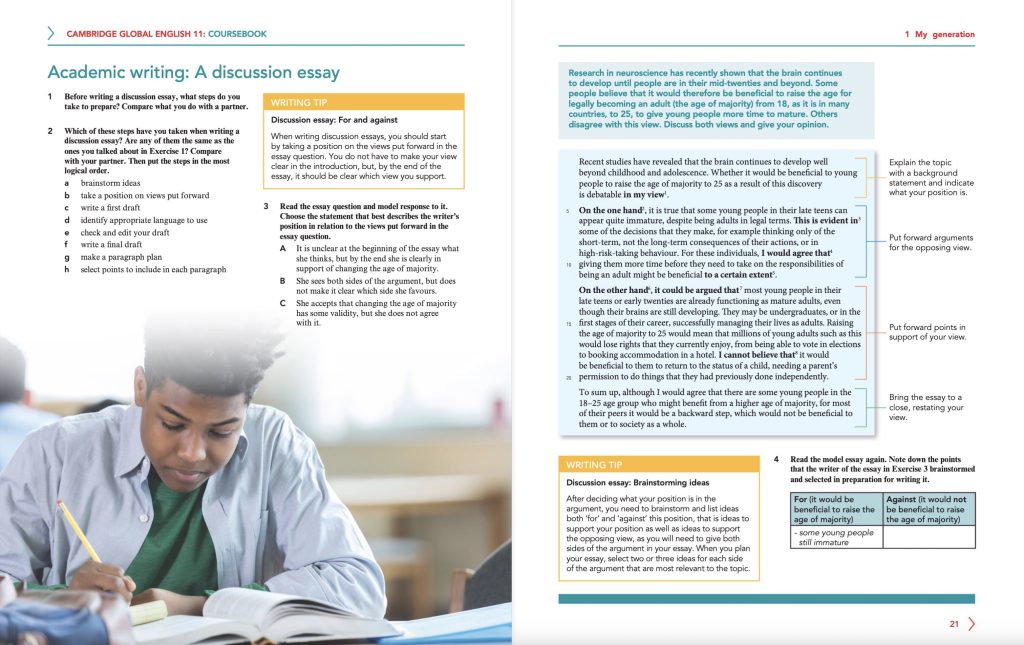
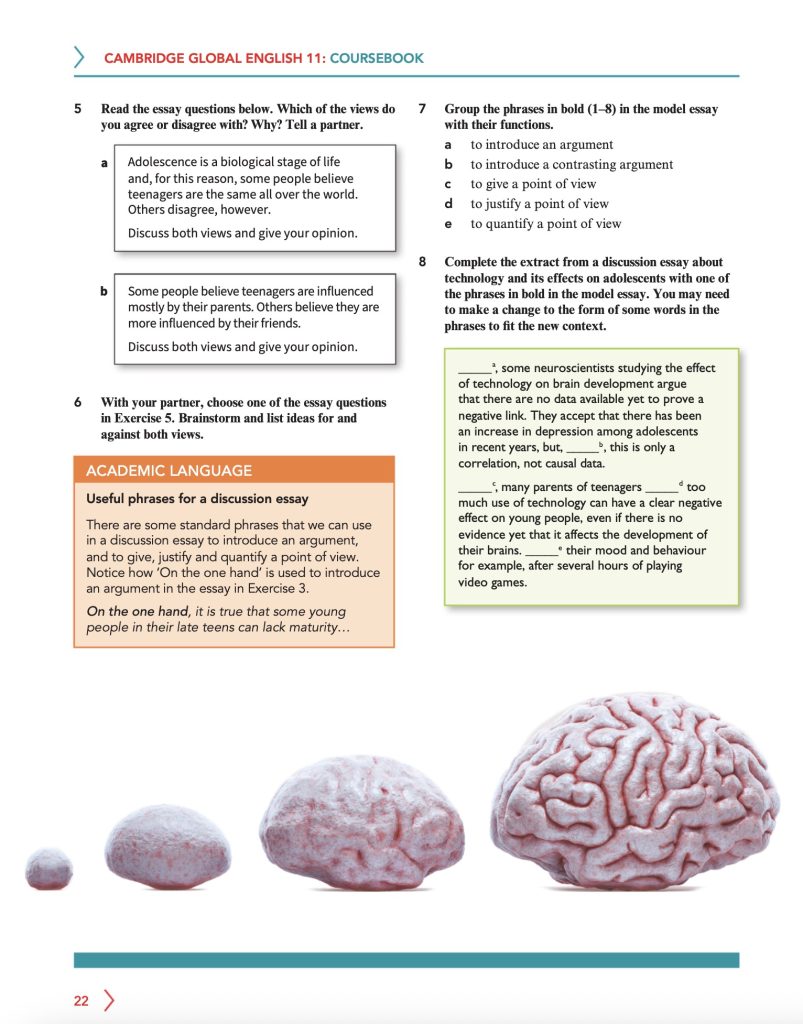
Here are some example activities from Global English 12.
Academic writing: An agree/disagree essay


Transitioning from upper-secondary to tertiary education can present challenges for ESL students in the realms of academic reading and writing. The complexity and unfamiliarity of university-level texts can be daunting, requiring students to develop critical reading skills and the ability to follow and analyze arguments. Similarly, mastering academic writing involves understanding new genres, developing persuasive and analytical skills, and learning how to structure essays effectively.
By focusing on these essential skills, educators can support students in overcoming these hurdles. Activities that enhance critical reading and writing skills help students engage more deeply with academic texts and express their ideas clearly and convincingly. Through targeted practice, students can build the confidence and competence needed to succeed in their academic pursuits.
Find out more about Cambridge Global English 10-12 series.
Watch our series of videos about Cambridge Global English 10-12 and how to choose your upper-secondary English resources.


